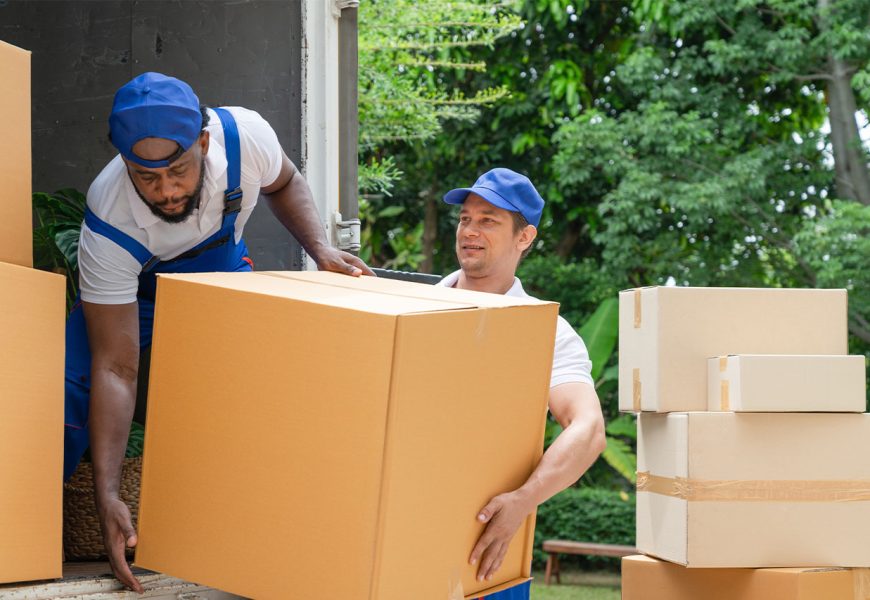Packing up your bedroom for a move is an important task that requires careful planning and organization. The bedroom is often filled with personal belongings, clothing, and furniture that need to be packed properly to ensure they arrive safely at your new home. Whether you’re moving within Scarborough or relocating to a different city, packing your bedroom efficiently will make the moving process smoother. In this article, we’ll guide you through the steps to pack a bedroom for a move in Scarborough.
1. Start with a Plan
Create a Packing Timeline: Packing a bedroom can be a time-consuming process, so it’s important to start early and create a timeline. Begin by setting a moving date, then work backward to schedule when you’ll start packing each area of your bedroom. Ideally, you should begin packing non-essential items a few weeks before moving day, leaving daily essentials for last.
Gather Packing Supplies: To pack your bedroom efficiently, you’ll need the right supplies. Here’s a list of essential packing materials:
- Sturdy cardboard boxes in various sizes
- Wardrobe boxes for hanging clothes
- Packing tape
- Bubble wrap or packing paper
- Plastic wrap for securing drawers and fragile items
- Labels and markers
- Furniture blankets or pads
- Mattress covers
Having all these supplies on hand before you start packing will save you time and prevent interruptions.
2. Declutter Your Bedroom
Sort Through Belongings: Moving is a great opportunity to declutter your bedroom. Start by sorting through your belongings and deciding what to keep, donate, sell, or discard. For clothing, consider donating items you haven’t worn in the past year. For furniture, assess whether each piece will fit in your new home and is worth the cost of moving.
Organize by Category: To make packing easier, organize your belongings by category. For example, group together all your clothing, shoes, books, and personal items. This will help you pack more systematically and make it easier to unpack in your new home.
Create a Donate or Sell Pile: Set aside items you no longer need in a separate pile. Consider holding a garage sale or listing items online to sell before your move. Not only will this reduce the number of items you need to pack, but it can also help offset moving costs.
3. Pack Clothing and Accessories
Use Wardrobe Boxes: For hanging clothes, invest in wardrobe boxes. These tall boxes come with a metal bar for hanging garments, allowing you to transfer clothes directly from your closet to the box without folding. This method saves time and prevents wrinkles. Pack heavier items, like coats and suits, at the bottom, and lighter items, like blouses and dresses, on top.
Pack Seasonal Clothing Separately: If you’re moving during a particular season, pack off-season clothing separately and label the boxes accordingly. This will make it easier to find what you need when you arrive at your new home.
Use Vacuum-Sealed Bags: For bulky items like winter coats, bedding, and blankets, consider using vacuum-sealed bags. These bags reduce the volume of bulky items, making them easier to pack and transport. They’re also great for protecting fabrics from moisture and dust during the move.
Organize Smaller Accessories: Pack smaller accessories like belts, scarves, and jewelry in separate boxes or containers. Use bubble wrap or tissue paper to wrap delicate items, and label each box clearly. For jewelry, consider using a jewelry box or small compartmentalized container to keep items organized and tangle-free.
4. Pack Bedding and Linens
Wash and Pack Linens: Before packing, wash all your bedding, sheets, and linens. This ensures that they’re clean and ready to use when you arrive at your new home. Fold and pack these items in large boxes, and label them so you can easily identify them later.
Use a Mattress Cover: To protect your mattress during the move, use a mattress cover. These covers prevent dirt, dust, and moisture from damaging the mattress. Most moving supply stores offer mattress covers in various sizes. Make sure to choose one that fits your mattress snugly.
Pack Pillows and Comforters Separately: Pack pillows and comforters in large, clear plastic bags or boxes. If you have space, you can also use them as cushioning for other fragile items in your moving boxes. Label these boxes clearly, as you may want to use them on your first night in your new home.
5. Pack Furniture and Larger Items
Disassemble Furniture: If possible, disassemble large furniture pieces, such as bed frames, dressers, and nightstands. Keep screws, bolts, and other small parts in labeled plastic bags, and tape them securely to the corresponding furniture pieces. This will make reassembly easier when you arrive at your new home.
Wrap Furniture for Protection: Use furniture blankets or pads to wrap larger furniture items to prevent scratches, dents, and damage during the move. Secure the blankets with plastic wrap or moving straps to keep them in place. For furniture with drawers, consider wrapping the entire piece with plastic wrap to keep drawers closed and contents secure.
Protect Mirrors and Glass: If your bedroom furniture includes mirrors or glass surfaces, take extra precautions to protect them. Use bubble wrap or packing paper to cover the glass, and place cardboard pieces on both sides for added protection. Mark these items as “fragile” and instruct movers to handle them with care.
Consider Professional Movers: If you have particularly large or heavy furniture, you may want to hire professional movers in Scarborough. They have the experience and equipment to safely move bulky items, reducing the risk of damage or injury.
6. Pack Personal Items and Decor
Pack Books and Documents: Books and documents can be heavy, so pack them in small, sturdy boxes to avoid overloading. Place heavier books at the bottom and lighter ones on top. For important documents, such as passports, financial records, and legal papers, consider keeping them in a separate, easily accessible box or folder.
Protect Fragile Items: For fragile items like picture frames, lamps, and decorative pieces, use plenty of bubble wrap or packing paper to cushion them. Pack these items in appropriately sized boxes and fill any gaps with packing peanuts or crumpled paper to prevent movement during transit.
Pack Electronics Carefully: If your bedroom includes electronics, such as a television, alarm clock, or speakers, pack them carefully to avoid damage. If possible, use the original packaging, which is designed to protect the device. If you don’t have the original packaging, use a sturdy box with plenty of cushioning material.
Label Boxes with Fragile Items: Clearly label any boxes containing fragile items with the word “fragile” and an indication of which way up the box should be carried. This will help movers handle these items with care and prevent accidents.
7. Label and Organize
Label Each Box Clearly: Labeling is key to staying organized during your move. Clearly label each box with its contents and the room it belongs to. For example, you might label a box “Bedroom – Shoes” or “Bedroom – Books.” This will make unpacking much easier and help movers know where to place each box in your new home.
Use a Color-Coding System: Consider using a color-coding system to make the labeling process even more efficient. Assign a different color to each room in your new home, and use colored tape or stickers to mark each box. This way, movers can easily identify which boxes belong in each room.
Keep an Inventory: As you pack, keep an inventory of the items in each box. This will help you keep track of your belongings and make it easier to find specific items when you start unpacking. You can create a simple inventory list on paper or use a moving app to organize your belongings digitally.
8. Prepare an Essentials Box
Pack an Overnight Bag: Moving day can be exhausting, and you may not have the energy to unpack everything right away. Pack an overnight bag with essential items you’ll need for your first night in your new home, including pajamas, toiletries, and a change of clothes. This will save you from digging through boxes when you’re tired.
Include Bedding and Towels: In addition to your overnight bag, pack a box with basic bedding and towels so you can make your bed and shower without delay. This box should be clearly labeled and kept easily accessible so you can use it as soon as you arrive.
Keep Valuables and Important Documents Close: For added security, keep valuables, such as jewelry, and important documents, such as your lease agreement or moving contracts, with you during the move. Carry these items in a separate, secure bag or box that stays with you at all times.
Conclusion
Packing a bedroom for a Moving Company Scarborough requires careful planning, organization, and attention to detail. By starting early, decluttering, and using the right packing techniques, you can ensure that your belongings are safely transported to your new home. Remember to label and organize your boxes, protect your furniture and fragile items, and keep essential items accessible for moving day.
















